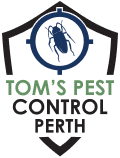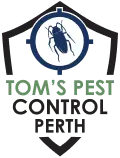Prompt, Affordable Same-Day Pest Control in Perth – From $129.
- Home
- Pest Treatments
- Termite Inspection & Treatment
- Ant Pest Control
- Bed Bug Treatment
- Beetle Pest Control
- Bird Control
- Borer Pest Control
- Cockroach Control
- Flea Control
- Fly Control
- Fox Trapping
- Mite Control
- Mosquito Pest Control
- Moth Control
- Possum Removal
- Silverfish Control
- Spider Control
- Wasp Control
- Rats And Mice Control
- End of Lease Pest Control
- Pest Management Perth
- General Pest Control
- Commercial Pest Control
- Office Pest Control
- Restaurants & Cafes Pest Control
- Hospitality Pest Control
- Education Facilities Pest Control
- Hospital & Aged Care Pest Control
- Pest Control Food Industry
- Factories & Warehouses Pest Control
- Government Buildings Pest Control
- Assets & Facilities Pest Management
- Farming and Agriculture Pest Control
- Strata Pest Control
- Construction Pest Control
- General Pest Control
- Termites
- Pest Info
- Pest Inspection
- Contact
- Home
- Pest Treatments
- Termite Inspection & Treatment
- Ant Pest Control
- Bed Bug Treatment
- Beetle Pest Control
- Bird Control
- Borer Pest Control
- Cockroach Control
- Flea Control
- Fly Control
- Fox Trapping
- Mite Control
- Mosquito Pest Control
- Moth Control
- Possum Removal
- Silverfish Control
- Spider Control
- Wasp Control
- Rats And Mice Control
- End of Lease Pest Control
- Pest Management Perth
- General Pest Control
- Commercial Pest Control
- Office Pest Control
- Restaurants & Cafes Pest Control
- Hospitality Pest Control
- Education Facilities Pest Control
- Hospital & Aged Care Pest Control
- Pest Control Food Industry
- Factories & Warehouses Pest Control
- Government Buildings Pest Control
- Assets & Facilities Pest Management
- Farming and Agriculture Pest Control
- Strata Pest Control
- Construction Pest Control
- General Pest Control
- Termites
- Pest Info
- Pest Inspection
- Contact
Redback Spider
(08) 6202 7096
Get A Free Quote Now!
Get A Free Quote Now!
Redback Spider
About the Redback Spider
Redback spiders (Latrodectus hasselti) are venomous spiders found in Australia. They belong to the family Theridiidae and are closely related to the black widow spider. Redback spiders are black and have a distinctive red or orange hourglass-shaped marking on the underside of their abdomen. They build webs in sheltered, dark locations, such as under rocks and logs or outhouses and sheds. Although their venom is toxic to humans, bites from redback spiders are rarely fatal. For effective spider treatment, it is crucial to address infestations promptly to ensure safety in your environment.
As mentioned before, redback spiders are black and have a distinctive red or orange hourglass-shaped marking on their abdomen’s underside. They have a round, rounded abdomen and long, slender legs. The female redback spider is larger than the male and can grow up to 1 cm in length, while the male is much smaller, typically only a few millimetres.
Redback spiders are usually found in urban areas, gardens, parks, and homes. They build webs in sheltered, dark locations, such as under rocks and logs, and in outhouses, sheds, and other man-made structures. They are also commonly found in dry, sheltered environments such as compost bins, long grass, and woodpiles.
Redback Spider Bites
Redback spider bites can be dangerous and cause severe symptoms, although fatalities are rare. The venom of redback spiders contains a neurotoxin that can cause severe pain, nausea, muscle weakness, and sweating. Bites from redback spiders can also cause more serious symptoms, including muscle tremors, difficulty breathing, and in severe cases, respiratory failure.
Reacting to a Redback Bite
If a redback spider bites you, the first thing you must do is remain calm. You must then immobilise the affected limb to slow down the spread of venom. Next, clean the bite area with soap and water and apply a cold compress to reduce swelling. Finally, you must seek medical attention as soon as possible to avoid complications.
It is important to remember that redback spider bites can be severe and prompt treatment is essential. In some cases, hospitalisation may be required. Call emergency services immediately if you are experiencing severe symptoms such as difficulty breathing, chest pain, or loss of consciousness.
Redback Spiders and Pets
Redback spiders can be dangerous for pets, especially dogs and cats. Their venom is toxic to animals and can cause severe symptoms, including pain, muscle weakness, and vomiting. Redback spider bites can be life-threatening in extreme cases, especially for smaller pets or those with weakened immune systems.
If you suspect a redback spider has bitten your pet, you must seek veterinary treatment immediately. To reduce the risk of redback spider bites, it is advisable to keep pets away from known spider habitats, such as piles of firewood or under rocks, and to supervise them when they are outside.
What to Do if You Encounter a Redback Spider?
If you encounter a redback spider, avoid disturbing it, as it may bite you if you feel threatened. You must keep a safe distance from this spider and avoid approaching it. If you need to remove the spider, use a long object, such as a broom, to put it into a container gently. Be sure to wear gloves to protect your hands.
If you see many redback spiders on your property, you must avoid removing them and call our professional pest control services for help. Our team knows how to handle these creatures safely, so we will implement the right treatment plans to keep you and your loved ones safe from them.
Speak to Us Today
Call us now if you have spotted a redback spider on your property.
Frequently Asked Questions
What Do Redback Spiders Eat?
Redback spiders feed on insects and other small animals trapped in their webs. They spin webs in sheltered, dark locations and wait for prey to become entangled in the sticky threads. Once the prey is trapped, the redback spider quickly wraps it in silk and bites it to immobilise it.
Where Do Redbacks Hide?
Redback spiders are often found in urban areas and are commonly seen in gardens, parks, and homes. They build webs in sheltered, dark locations, such as under rocks and logs, and in outhouses, sheds, and other man-made structures. They are also commonly found in dry, sheltered environments such as compost bins, long grass, and woodpiles. Redback spiders prefer to hide where they can easily detect and capture their prey, such as near lights, windows, and spaces protected from the elements. They are attracted to the warmth and light of buildings, making them a common household pest. To reduce the risk of encountering redback spiders, it is advisable to keep your home and outdoor areas clean and free of clutter and to check for and remove any webs that you find regularly.
Are Redback Bites Dangerous?
Redback spider bites can be dangerous and, in some cases, potentially life-threatening. The venom of redback spiders is toxic to humans and can cause symptoms such as severe pain, muscle weakness, sweating, and nausea. In extreme cases, redback spider bites can lead to symptoms such as difficulty breathing, chest pain, and in rare cases, heart and nervous system failure.
 (08) 6202 7096
(08) 6202 7096


